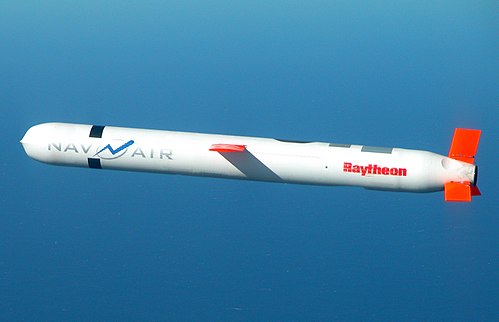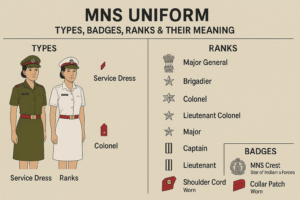1. Background
Japan and the United States signed an agreement for the purchase of up to 400 Tomahawk cruise missiles.
The deal is part of Japan’s ongoing military buildup amid rising security threats from China and North Korea.
Marks a significant shift in Japan’s post-World War II defense policy, moving towards offensive strike capability.
2. Details of the Agreement
Missiles Purchased:
200 Tomahawk Block IV missiles
200 Tomahawk Block V (upgraded) versions
Range: Up to 1,600 km (1,000 miles)
Cost: Around $2.35 billion
Launch Platforms: Warships (Maritime Self-Defense Force vessels)
Training: Japanese personnel training to begin in March 2026
Deployment: Accelerated — beginning FY 2025 (one year earlier than planned)
3.Tomahawk Cruise Missile – Overview
Type: Long-range, subsonic cruise missile
Origin: United States (developed by Raytheon)
Range: Up to 1,600 km (1,000 miles)
Speed: Around 880 km/h (Mach 0.75)
Launch Platform: Can be launched from surface ships and submarines
Guidance System: Uses GPS, inertial navigation, and terrain contour matching for precision targeting
Warhead: Can carry conventional or nuclear payloads (Japan will use conventional versions)
Variants:
Block IV: Combat-proven version with reprogrammable targets in flight
Block V: Latest version with improved navigation, communication, and maritime strike capability
4.Significance
Allows long-range precision strikes deep into enemy territory.
Key tool for deterrence and offensive operations without deploying troops.
Used by the U.S. and allied navies, now being introduced by Japan under its new defense strategy.
5. Japan’s Defence Strategy Shift
Under the 2022 National Defense Strategy, Japan aims to:
Double its annual defense spending to ~10 trillion yen ($68 billion) by 2027.
Attain the position of the third-largest military spender after the USA and China.
Seeks to develop “counter-strike capabilities” — ability to strike enemy bases if attacked.
Integration with Allies: Japan deepening defense cooperation with:
United States
Australia
United Kingdom
South Korea and other Indo-Pacific partners
6. Geopolitical Context
Japan’s security environment described as the “severest since World War II.”
China: Increasing assertiveness in the East and South China Seas.
North Korea: Advancing missile and nuclear weapons programs.
U.S. Strategy: Ensure deterrence and maintain “status quo without force-based change” in the Indo-Pacific.
U.S.–Japan Alliance: Strengthened under PM Fumio Kishida and U.S. Ambassador Rahm Emanuel.
7. Recent Related Developments
U.S. Army deployed Typhon missile system in Japan (2025): Adds to regional deterrence.
Easing of Japan’s Arms Export Rules (2024–25):
Allows export of lethal weapons and licensed components.
First major export: Japanese-made Patriot missiles sent to the U.S.
Japan also advancing its indigenous Type-12 Surface-to-Ship Missile program for long-range deterrence.
8. Strategic Significance
For Japan:
Enhances deterrence capability.
Marks a shift from “self-defense only” to proactive deterrence.
Symbolizes emergence of a “New Japan” — militarily capable and assertive.
For the U.S.:
Strengthens the Indo-Pacific defense architecture against China and North Korea.
Reinforces collective defense under the U.S.–Japan Security Alliance.
For the Indo-Pacific:
Contributes to a balance of power in the region.
May trigger an arms buildup among regional powers (e.g., China, North Korea).
9. Criticism and Concerns
Critics argue this may:
Undermine Japan’s pacifist constitution (Article 9).
Increase regional tensions and provoke an arms race.
Create domestic political divisions over Japan’s military expansion.
10. India’s Perspective
India supports a Free and Open Indo-Pacific (FOIP) framework.
Japan’s enhanced role aligns with India’s strategic interests in:
QUAD grouping (India–Japan–U.S.–Australia)
Ensuring maritime security and supply chain resilience in the Indo-Pacific.
Strengthens defense interoperability and shared deterrence posture against coercive actions in the region.
11. UPSC Relevance
GS Paper 2: International Relations
Bilateral agreements, defense cooperation, Indo-Pacific strategy, and regional security architecture.
GS Paper 3: Internal and External Security
Strategic capabilities, missile technology, and defense modernization trends in Asia.
12. Possible UPSC Questions
(a) Prelims:
The Tomahawk missile, recently in news, is primarily:
(a) An intercontinental ballistic missile
(b) A long-range cruise missile
(c) A short-range surface-to-air missile
(d) A hypersonic glide vehicle
Answer: (b)Japan’s new defense strategy allows the development of:
(a) First-use nuclear capability
(b) Counter-strike capabilities
(c) Space-based missile systems
(d) Civil defense systems
Answer: (b)
(b) Mains (GS Paper 2/3):
“Japan’s acquisition of long-range strike capabilities marks a fundamental shift in the post-war security balance in East Asia.” Discuss its implications for regional stability and India’s Indo-Pacific strategy.
13. Summary in Keywords
Japan–U.S. Tomahawk Deal | Fumio Kishida | Rahm Emanuel | Minoru Kihara | 400 Tomahawks | Block IV & V | 1600 km range | Defense doubling by 2027 | Counter-strike capability | Indo-Pacific security | China & North Korea | QUAD | Article 9 | Deterrence
🔗 For More UPSC 2026 Current Affairs Analysis:
Visit www.victorgrowth.com for daily UPSC notes, PYQs, and Indo-Pacific strategy updates.







